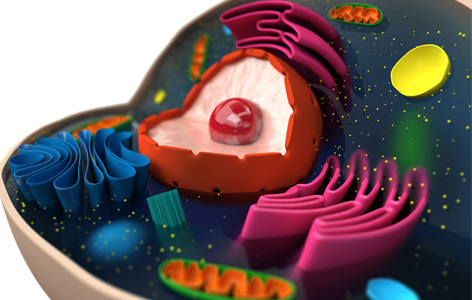
In the process of converting food into energy, harmful by-products called reactive oxygen species (ROS) are generated. The harmful effects of ROS are normally cancelled out by antioxidant proteins, but overeating and lack of physical activity can lead to ROS overproduction—effects that when combined are thought to cause cell stress, obesity and metabolic diseases like diabetes.
Surprisingly, restricting calories and exercising also stimulate ROS overproduction, yet these lifestyle changes do not lead to obesity. Given these contradictory outcomes, more research is needed to determine how the balance between ROS and antioxidants promotes positive or negative metabolic changes.
A study led by TGHRI Scientist Dr. Minna Woo provides new insight into the link between ROS and the development of obesity-related metabolic diseases. Her team found that muscle cells exposed to high amounts of fats produce elevated levels of ROS. As expected, when the antioxidant protein known as DJ-1 was turned off ROS levels increased even more. What was surprising was that the absence of DJ-1 turned on a program that caused the cells to waste energy. The energy was therefore not stored as fat, providing protection against obesity and diabetes.
"This novel metabolic function of DJ-1 reveals its essential role in the effective conservation of energy in times of famine. Abolishing the activity of DJ-1 leads to fuel wasting, which is exactly what we need in the modern world of calorie excess and sedentary lifestyle," says Dr. Woo. "Our study illustrates how interventions that target programming of energy use may be a new therapeutic strategy for people with obesity or diabetes."
This work was supported by the Canadian Institutes of Health Research, the Canadian Diabetes Association and the Toronto General & Western Hospital Foundation. M Woo holds a Tier 2 Canada Research Chair in Signal Transduction in Diabetes Pathogenesis and T Mak holds a Tier 1 Canada Research Chair in Inflammation Responses and Traumatic Injury.
DJ-1 links muscle ROS production with metabolic reprogramming and systemic energy homeostasis in mice. Shi SY, Lu SY, Sivasubramaniyam T, Revelo XS, Cai EP, Luk CT, Schroer SA, Patel P, Kim RH, Bombardier E, Quadrilatero J, Tupling AR, Mak TW, Winer DA and Woo M. Nature Communications. 2015 Jun 16. [Pubmed abstract]




